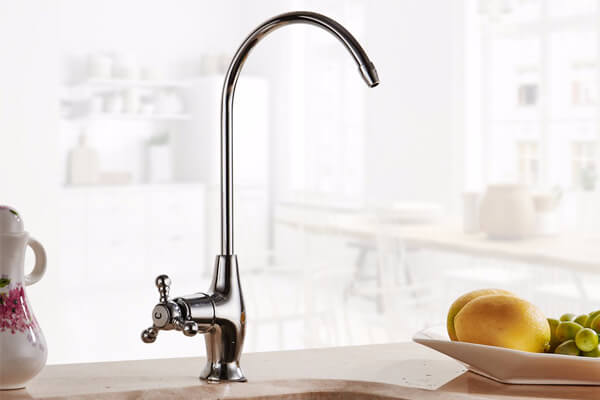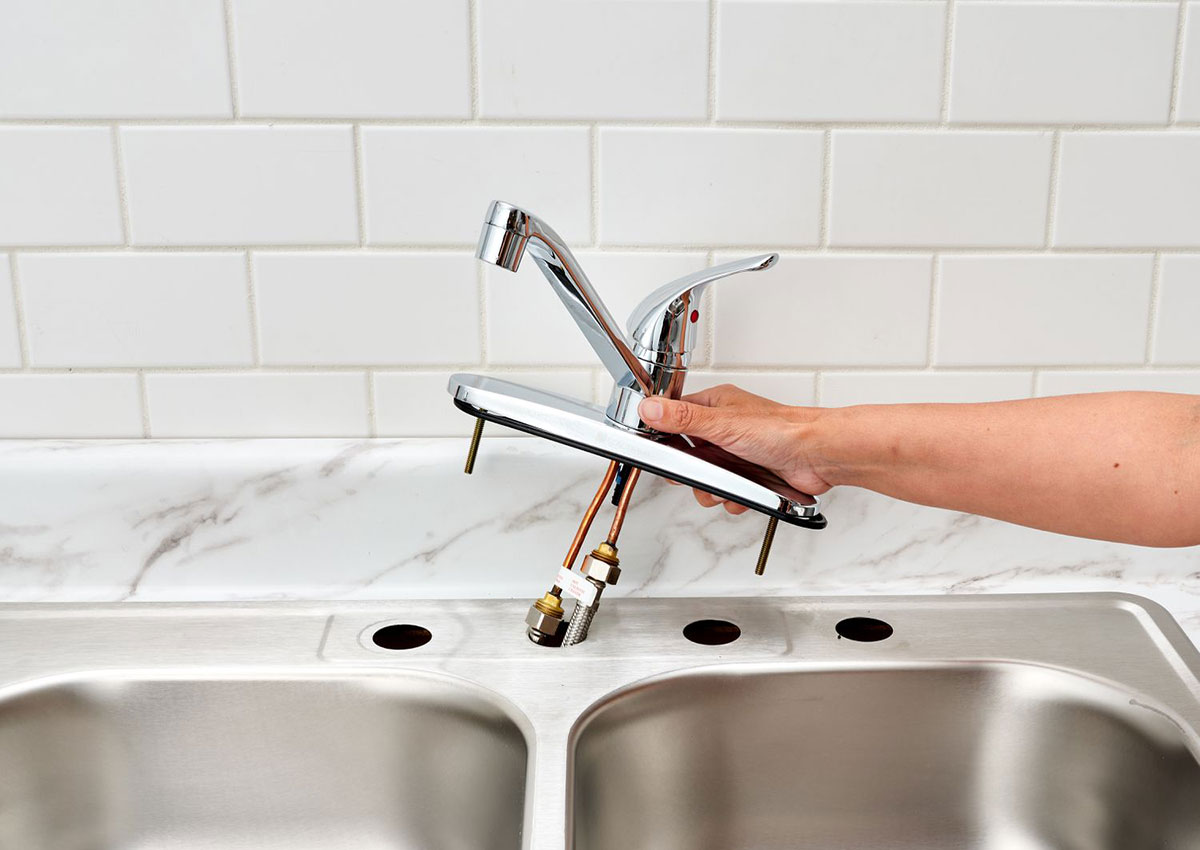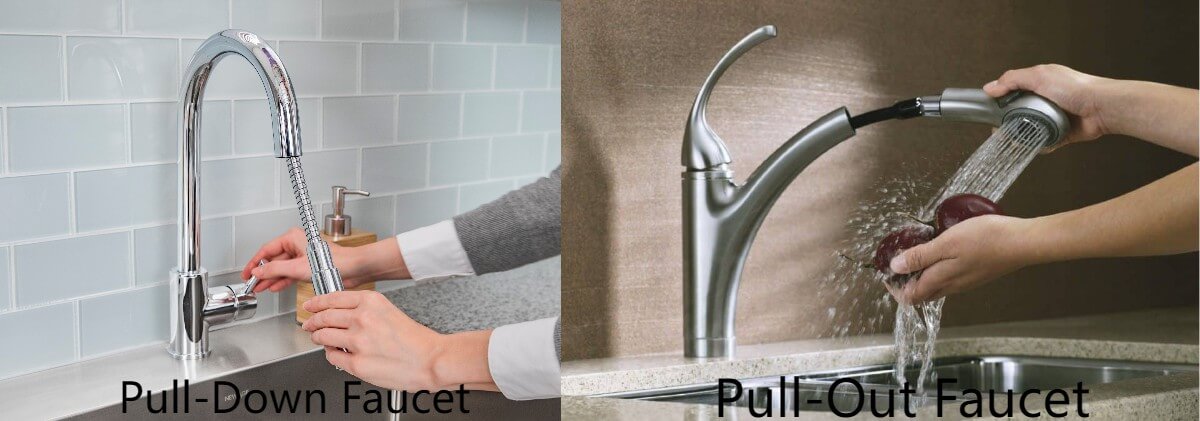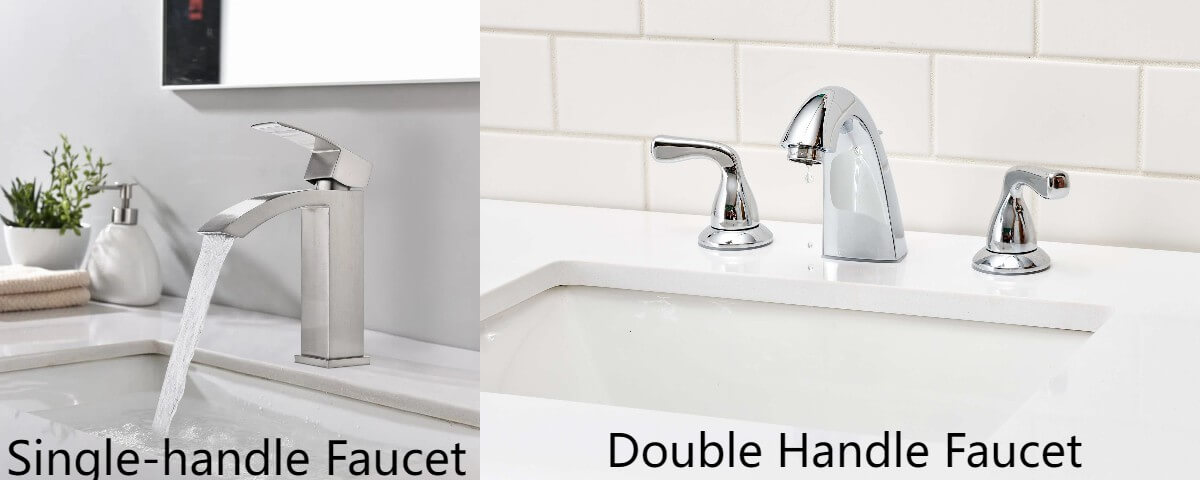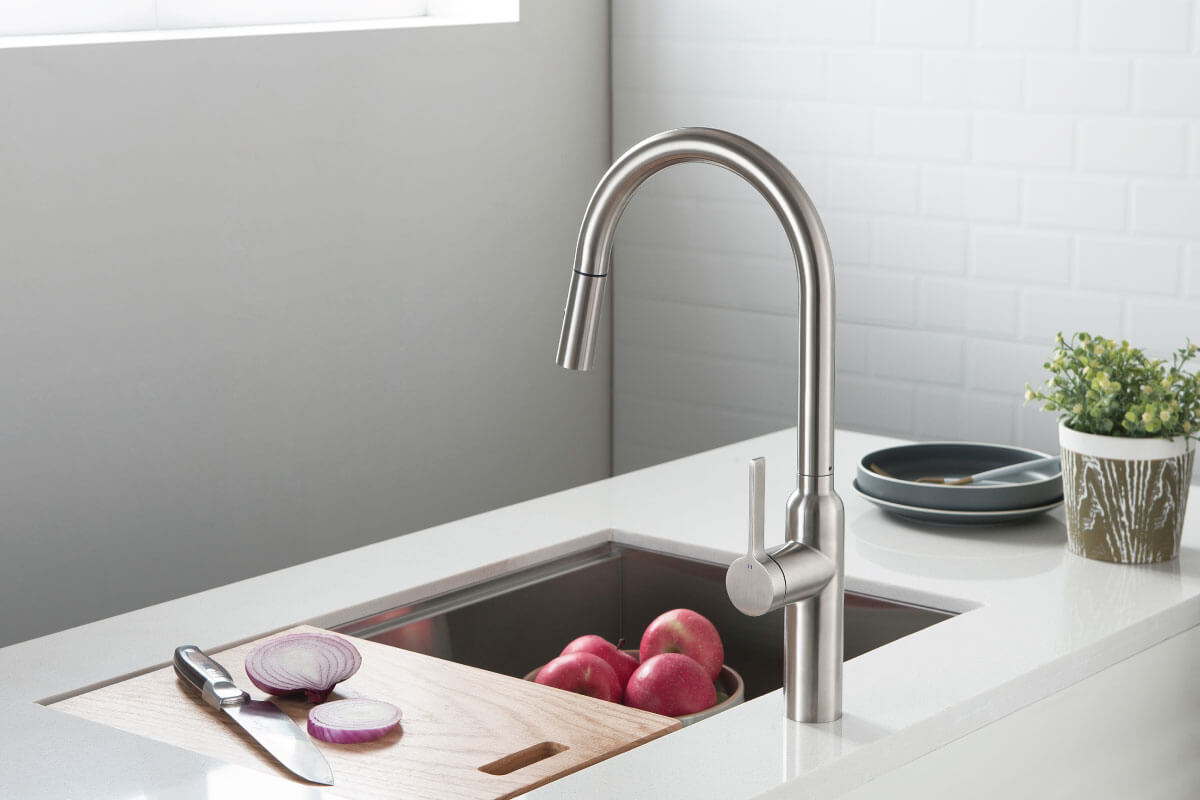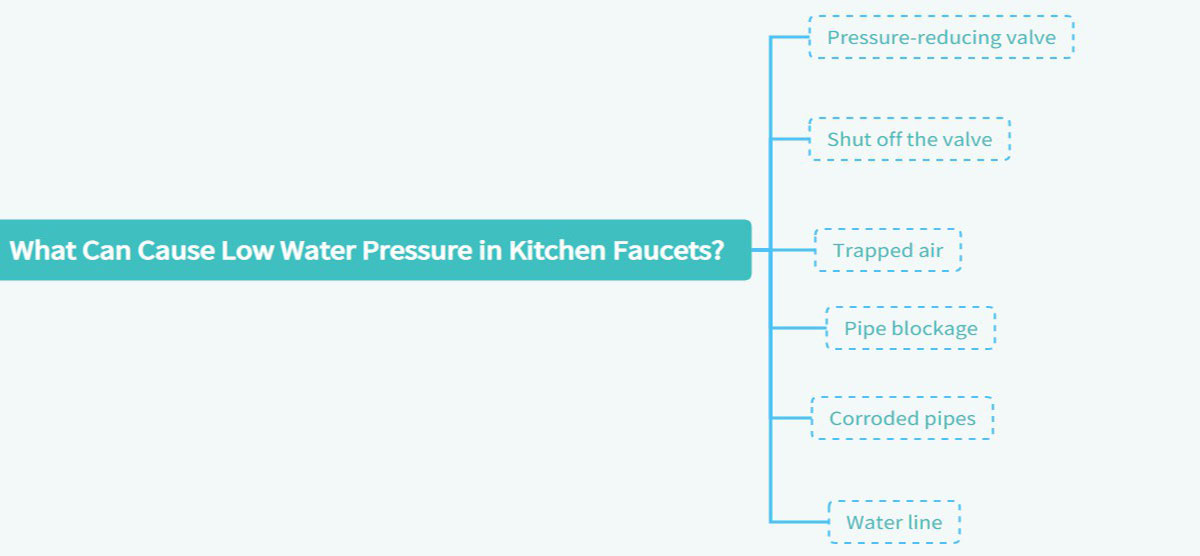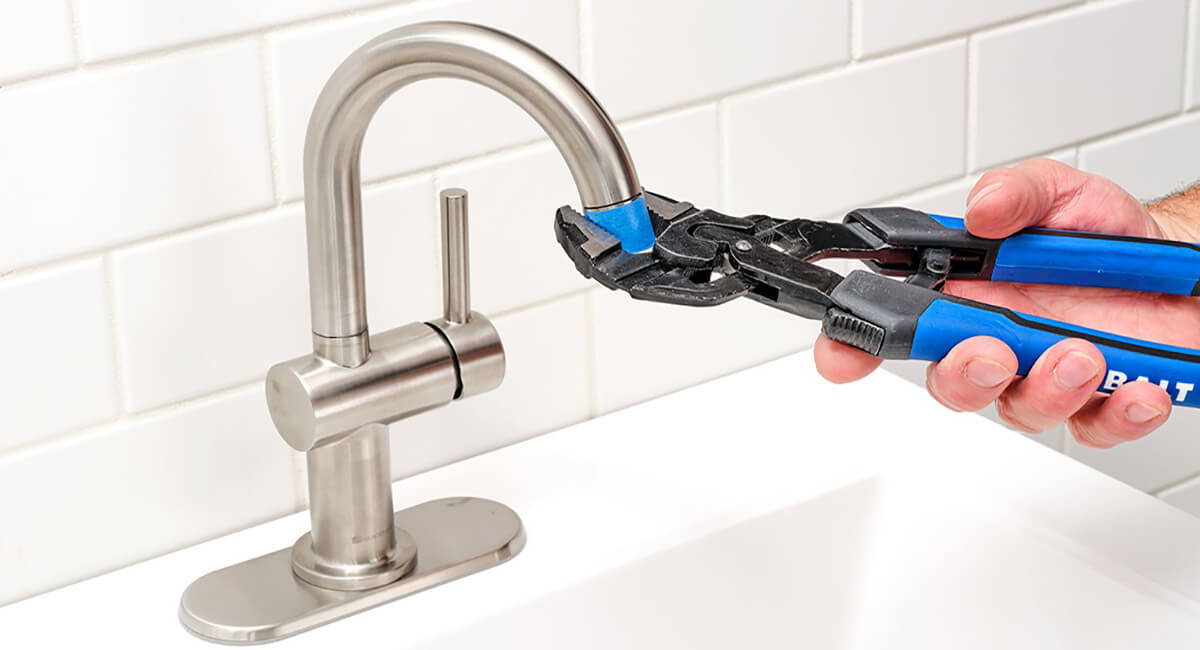If you’ve been interested in DIY projects and trying to learn how to replace a kitchen faucet, you’ll quickly realize that there are a lot of things to consider. Kitchen faucets come in a variety of sizes, styles, and functions, making any DIY project seem challenging. Fortunately, Nicemoco has been making kitchen faucets for over 15 years, and there are some simple questions to ask yourself to help you pick the best faucet for your current kitchen, budget, and preferences.
1. How Many Holes Does a Kitchen Faucet Need?
Some things you need to consider when starting out are how many holes your countertop has, whether are you willing to drill the holes, or do you want to cover the extra holes. Faucets with an integral single handle require one hole, while faucets with two separate handles typically require three holes. Any additional features, such as side sprayers, drinkers, or soap dispensers, will require additional holes. However, if you have extra holes in your under-mount sink or countertop, Nicemoco offers a variety of stylish cover options to cover unused holes.
(Another related post: Kitchen Faucet Flow: Everything You Need to Know)
2. Is a Pull-Down or Pull-Out Faucet Better?
Pull-out faucets are usually shorter than pull-out models, and they’re ideal if your kitchen cabinets sit above your sink. Another advantage of this type of faucet is that the nozzle is larger, so the water spray surface is larger. Pull-down faucets are usually taller, making them easier to clean and rinse due to the greater clearance under the spout.
The sprayer can be mounted separately on the side of the spout or integrated into the spout. This is called a pull-out sprinkler design or a pull-down sprinkler design. An integrated sprayer provides convenience and functionality. Pull-out and pull-down kitchen faucets offer all the functions of a sprayer in a more simplified form and are easier to install, maintain, and use.
3. What is the Difference Between Spout Height and Faucet Height?
At Nicemoco, you may hear the terms “spout height” and “faucet height” used interchangeably. Spout height measures the length from the connection point on the counter or sink (countertop) to the top of the faucet. The taller the spout, the easier it is to place tall pots underneath for filling or cleaning. The tall spout makes cleaning tall pots easier. If you have your sink on an elevated shelf or have cabinets below it, choosing a faucet with a shorter height may help you better reach the water at both ends of the sink.
(Another related post: How to Identify Your Kitchen Faucet Brand?)
4. What is the Ideal Spout Range?
The spout distance measures the horizontal distance from the center of the spout opening to the center of the spout base. To find the best spout length for your sink, measure the distance from the faucet mounting hole to the center of the drain. If you are installing a closer offset faucet, this will ensure that you will still have enough distance and be able to use it to wash your hands. This is an important consideration for faucet and sink compatibility.
5. Single-handle Faucet Or Double Handle Faucet?
Single-lever faucets usually only require one or two holes punched into the countertop, which can be handy if you often find yourself with only one hand free. Smaller sink basins or limited counter space may require a single-lever faucet. However, they may not be able to adjust the temperature as precisely as two-handle faucets. Two-handle faucets have a wider range and are more suitable for kitchen sinks with a little more space. Additionally, the traditional setup of a two-handle faucet has separate hot and cold handles for better temperature control but requires both hands to adjust the temperature at the same time. Two-handle faucets typically require three or four holes.
(Another related post: What are the Best Materials for Bathroom Faucets?)
6. What Kind of Kitchen Faucets Are Popular?
The style of the faucet is entirely up to the owner, but knowing the basic idea of what you are looking for can help optimize the design of your kitchen space. Traditional faucets feature classic designs, curved surfaces, and attractive details. Modern faucets are sleek and simple with sharper lines. Transitional faucets offer the best of both worlds, combining classic and contemporary elements for a look that complements every style.
7. Which Finish is Best for Kitchen Faucets?
Nicemoco offers kitchen faucets in chrome, stainless steel, satin black, and brushed bronze finishes to suit any style. Stainless steel finishes tend to be the most popular choice for many kitchens because they stand out, are durable and easy to clean, and can be easily matched with other fixtures and appliances throughout the kitchen.
For a uniform look, match your cabinet hardware and other fixtures to your faucet finish. Or, to make your faucet the star of the show, choose a finish that stands out from the rest of the room for an eye-catching statement piece.
(Another related post: A Complete Guide for Buying Faucets)
8. What Can Cause Low Water Pressure in Kitchen Faucets?
Have you noticed low water pressure or a sudden drop in water pressure when using two faucets? This is a serious but common problem in bathrooms, kitchens, and other places where water is drawn from two taps or sources.
Many things can trigger low water pressure. When water pressure is struggling in a single faucet, and the problem is not related to that faucet, deciphering the problem is usually quick and easy. In cases where water pressure drops after a few faucets have been running for a few seconds, the culprit could be several different things.
1) Pressure-reducing valve
A problem with the pressure relief valve can cause low water pressure. If the water pressure starts out normal and then drops, the PRV valve may be causing the problem. They are often located on municipal systems or where water pressure exceeds 80 psi.
When water pressure is too high, pipes and fixtures can be damaged. If there is a problem with the PRV, try adjusting the valve to see if it affects the water pressure in your home. If nothing works, the entire unit may need to be replaced. Water from a private well is pressurized through a pressure tank that maintains a certain pressure level. In a residence, the ideal water pressure should be between 45 and 55 pounds per square inch. However, it’s usually between 45 and 80 psi.
2) Shut off the valve
Check the main water supply and the shutoff valves at both faucets. If the valve is slightly closed, it may affect your water pressure, so check to make sure it is fully open. You may have a problem with the shutoff valve in the slightly closed position if you have recently repaired your plumbing system or if your child bumps into the valve.
If your sink has shutoff valves for hot and cold water, and your cold water pressure is low, the cold water shutoff valve may be slightly closed. The shutoff valve for a particular faucet may be located under the sink. The main water shutoff valve may be located near your furnace or water heater, or within three to five feet of wherever the water main enters your home.
3) Trapped air
When the air gets trapped in the pipes, it can cause the water pressure in your home to fluctuate. As water flows through the pipe to your faucet, it acts as a sort of valve, causing the occasional sputtering sound and flow of water from the faucet. Air can enter the plumbing through a damaged tank air bladder, a failing pump, a leaking suction line, leaks in the plumbing, or gas buildup in the well water system.
4) Pipe blockage
If the pipes in your home are clogged for any reason, it may cause insufficient water pressure at the taps in your home. The water flow is interrupted, reducing water pressure in specific areas of your home. This problem is hands-on and probably needs to be handled by a professional unless you’re a skilled do-it-yourselfer.
5) Corroded pipes
Over time, plumbing in your home can corrode, causing problems across the board. If the corrosion becomes severe enough, leaks, water pressure drops, and other problems can occur. Replacing all the plumbing in your home is a daunting task and will be an expensive venture, but worth the effort.
Pipes in older homes tend to corrode, as most pipes last between 20 and 100 years. Galvanized steel pipe typically lasts 20 to 50 years, while copper, brass, and iron materials last 40 to 100 years. Corroded pipes can cause low water pressure indoors, as well as low pressure at faucets outside. Corroded or leaking pipes can affect garden hose faucets, outdoor faucets, and more.
6) Water line
A cracked or pinched water pipe could also be the culprit. Broken or pinched water pipes can often cause problems throughout the home and are often not isolated to two faucets.
(Another related post: Top 10 Faucet Manufacturers in China)
9. Can A Bad Kitchen Faucet Cause Low Water Pressure?
Faulty faucets can cause low water pressure. Bad parts inside the faucet, such as a clogged aerator or clogged filter element, can cause a sudden drop in water pressure. A bad faucet can cause fluctuations in water pressure between two faucets in the same room. For troubleshooting low water pressure from two faucets in the same room, start by checking the faucets themselves.
How Can I Fix it?
If you can identify which of the two seems to be experiencing low pressure, start with that. Before disassembling the faucet, turn off the water supply to the faucet. Remove the end of the faucet and check the aerator, which is the part that sits inside the spout.
Make sure it’s clean and free of any mineral buildup or other debris. If the aerator has gunk in it, soak it in a water and vinegar solution. However, if that solution fails to loosen debris, you may need to purchase replacement parts. Check the water flow to the faucet before replacing the aerator. If the flow from the faucet is still low, the low water pressure may not be caused by that particular faucet, it may be a widespread problem.
10. Can A Mixing Valve Reduce the Water Pressure of the Kitchen Faucet?
Some types of shower valves have what’s called a thermostatic mixing valve, which individually controls water temperature and pressure. A malfunctioning mixing valve can cause a drop in water pressure.
(Another related post: Smart Faucet: All You Need to Know)
11. Conclusion
These are the common problems of kitchen faucets and their solutions. Reading this article will help you quickly find a satisfactory kitchen faucet. Nicemoco will do everything you need from a faucet manufacturer.





